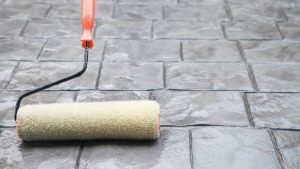While trees can enhance the value and appeal of your house, they can also provide a hazard in severe storms. Strong winds, rain, and snow can turn overgrown or diseased trees into hazardous conditions. Maintaining the safety and health of your yard depends on proper Tree Trimming, particularly in advance of storm season.
Inspect Trees Regularly for Health and Stability
Consider your trees’ general condition before cutting them. Search the tree for indicators of structural flaws, disease, or decay that can increase its vulnerability to storm damage. Broken limbs, hollow trunks, or leaning trees should be taken care of right away since these can become more likely to fall in strong winds or heavy rain. If you discover any issues, consult a professional arborist to determine whether to cut or remove the tree.
Trim Dead, Damaged, or Overgrown Branches
Regularly cutting dead, broken, or overgrown branches lowers the possibility of storm-related falling debris. Especially sensitive and prone to breaking off readily when the wind comes up are dead branches. Cut down any big, heavy branches hanging over your driveway, house, or other construction. Eliminating extra weight and guaranteeing a balanced tree structure can help lower the likelihood of a limb breaking and damaging anything during a storm.

Focus on Tree Canopy and Crown Maintenance
Strong winds and heavy rain most affect a tree’s uppermost branches, or canopy and crown. Minimizing storm damage depends on maintaining these places. Thin the crown of the tree to increase air flow and lower wind resistance. Should the canopy be overly dense, it may function as a sail in high winds, raising the possibility of the tree being uprooted or of branches breaking off.
Know the Best Time for Tree Trimming
Tree trimming calls for timing to be perfect. Most trees should be trimmed during their dormant season—usually late fall or early winter—when the tree is not actively developing. Pruning during this time helps the tree repair more quickly, therefore lowering the possibility of illness or infection. Steer clear of cutting trees in spring or summer since this would stress the tree and increase its susceptibility to injury.
Yard maintenance depends critically on regular Tree Trimming, particularly in preparation for stormy conditions. Your trees will be less likely to suffer storm damage if you closely check them, cut off dead or damaged limbs, and guarantee their structural balance. Not only does timely pruning maintain the safety of your yard, but it also helps your trees be healthy and long-lived. These easy guidelines will help you safeguard your home and savor the year-round beauty of your surroundings.


























